Key takeaways:
- Version control acts as a safety net, enabling coders to track changes, revert mistakes, and foster collaboration, enhancing productivity and clarity in projects.
- Establishing a coherent project structure and writing descriptive commit messages significantly improve team communication and project organization.
- Automating workflows with tools like CI/CD pipelines, Prettier, and ESLint boosts code quality and developer confidence, streamlining the development process.
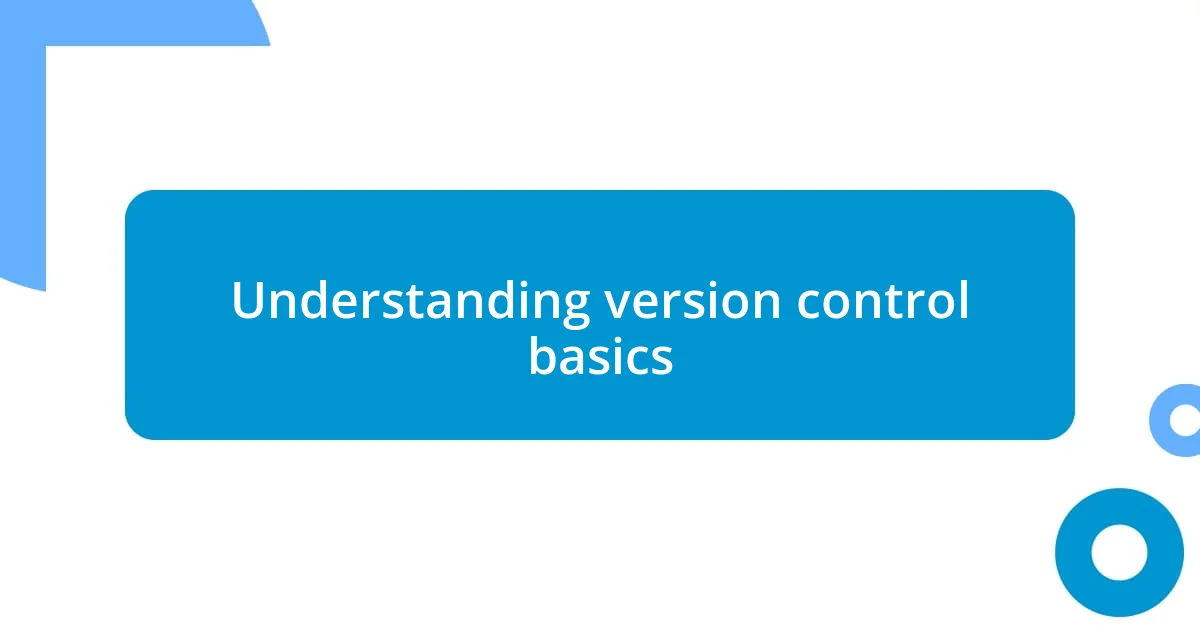
Understanding version control basics
Version control is essentially a way to keep track of changes in your code. I remember the first time I forgot to save a crucial part of my project—it felt like losing a piece of my creativity. It’s like having a safety net; whenever you make a mistake or want to revert changes, you can simply go back to a previous version.
Think of version control systems, like Git, as your project’s time machine. When I use it, I can see the evolution of my work, which is incredibly satisfying. Have you ever wished you could revisit your thought process from days ago? With version control, I can explore how an idea transformed into the final application, providing insights into my own development as a coder.
Understanding version control also fosters collaboration. I recall a team project where we had multiple contributors, and without version control, it could have become chaotic. Instead, we worked seamlessly, merging our work while keeping track of who did what—imagine the harmony of a well-rehearsed orchestra, where every note played enhances the overall composition!
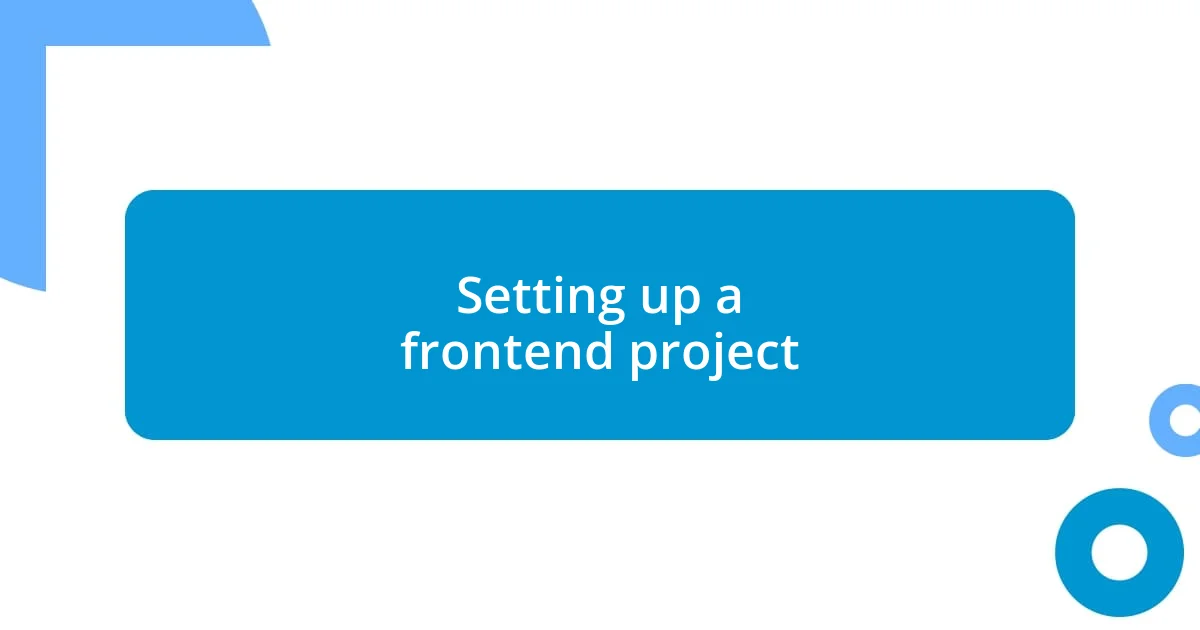
Setting up a frontend project
When I set up a new frontend project, I always start by establishing a solid project structure. It’s easy to get overwhelmed with all the files and folders, so I emphasize a layout that feels intuitive. I once spent hours searching for a JavaScript file buried in a chaotic directory. Now, I create distinct folders for components, styles, and assets, which not only makes my work cleaner but also speeds up development.
Here’s how I organize my project:
- src: Contains all the source files.
- components: For reusable React components (or any other framework).
- styles: Where I keep stylesheets or CSS modules.
- assets: For images, icons, and fonts.
- public: For static files that should be directly served.
- tests: A dedicated space for my testing files.
This structure not only enhances my productivity but also makes it easier for collaborators to jump in and understand my code at a glance. When I onboard new team members, they often comment on how relieved they feel when the project is both structured and accessible. It’s these small details that can make a monumental difference in the overall workflow.
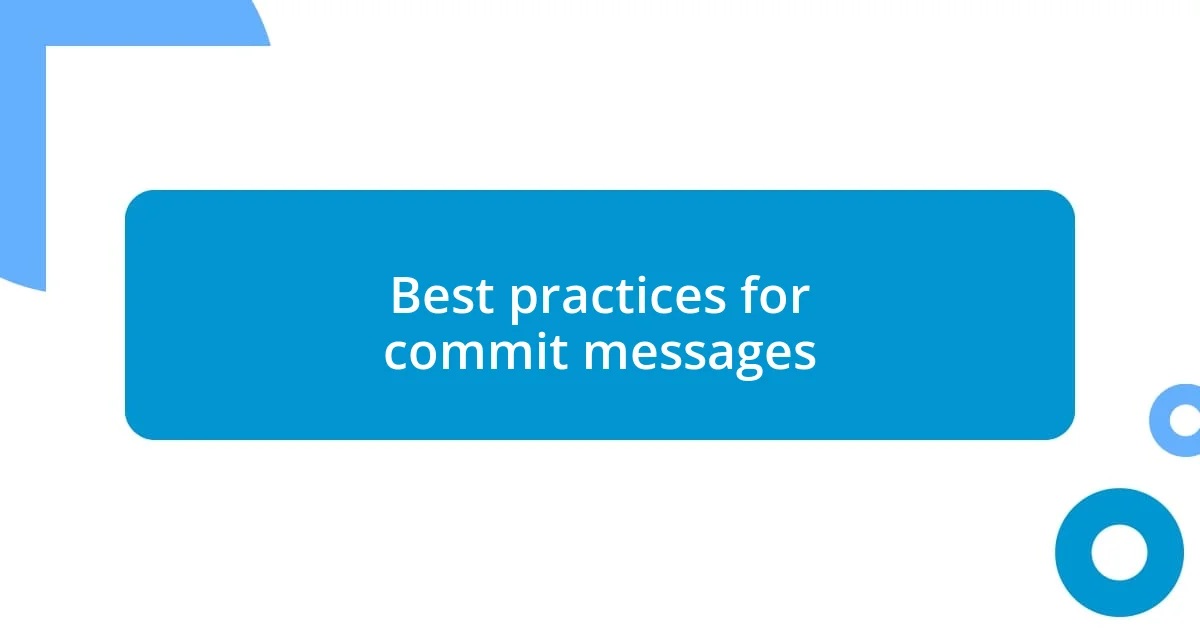
Best practices for commit messages
Crafting effective commit messages is more than just a routine; it’s a critical skill that shapes clarity in collaborative projects. I remember a project where a teammate wrote vague messages like “Fix stuff” that left others scratching their heads. Through that experience, I learned that a concise yet descriptive message—like “Fix header alignment in navigation”—can make a world of difference. It not only helps others understand the change at a glance but also serves as a useful reference in the future. A good commit message is like a breadcrumb trail guiding you back to the thought process behind each change.
The habit of breaking down commits into logical units has significantly improved my workflow. This approach reminds me of how a book is structured; each chapter should focus on a specific theme. By committing related changes together, I provide context and avoid the dreaded “What did I mean by that?” questions later. I often aim for messages that include the ‘what’ and ‘why’. For instance, instead of just stating “Update styles,” I prefer “Update button styles for accessibility compliance.” This is not just a tip; it’s a way to respect my future self and anyone who may work with my code down the road.
Lastly, it’s crucial to use the imperative mood in commit messages. Phrasing it as a command, like “Add search functionality” instead of “Added search functionality,” conveys intention clearly. I can’t stress enough how helpful this has been in keeping my commit history organized and action-oriented. It transforms each commit into a list of tasks ready to be accomplished and encapsulates the work done in a forward-looking manner. Over time, I’ve come to appreciate how these small tweaks enhance the overall readability and professionalism of my repository.
| Best Practice | Description |
|---|---|
| Be Descriptive | Write clear messages that explain the change’s purpose, e.g., “Fix header alignment in navigation.” |
| Logical Commits | Group related changes into single commits to maintain context, e.g., “Update button styles for accessibility compliance.” |
| Use Imperative Mood | Phrase messages as commands for clarity, e.g., “Add search functionality.” |

Collaborating with teams using versions
Collaboration in teams can be a delightful experience, but it also comes with its challenges. I vividly remember joining a project where everyone was working off different branches, and none of us had any clear understanding of each other’s changes. It felt like a game of telephone, where the final message was often garbled. However, through our shared version control system, we found our rhythm. By aligning our branches and regularly merging them, we cultivated a more harmonious workflow. It’s almost magical to watch the pieces come together, knowing that everyone is moving toward a common goal.
When I collaborate with others, I often propose regular check-ins to discuss branch updates. This practice not only ensures that everyone is on the same page but also fosters a sense of camaraderie. I’ve found it incredibly motivating to hear my teammates share their wins and challenges. For instance, I once worked with a designer who integrated user feedback seamlessly into our code, and discussing her insights inspired me to enhance my own contributions. Have you ever experienced the power of collaboration, where shared conversations led to breakthrough ideas? That’s the essence of successful teamwork in version control.
Moreover, I believe that leaving clear comments in our code is crucial during collaboration. I remember when a colleague left a detailed note regarding a complex function they had written, and it made a world of difference during code reviews. It’s common to overlook the nuances of our own changes, but a thoughtful comment can bridge that gap. I’ve started making it a habit to encourage comments in our pull requests, creating an environment where we can all learn from each other’s code. How do you approach communication in your team workflows? I’ve come to realize that fostering open dialogue greatly enhances the collective understanding of the project.
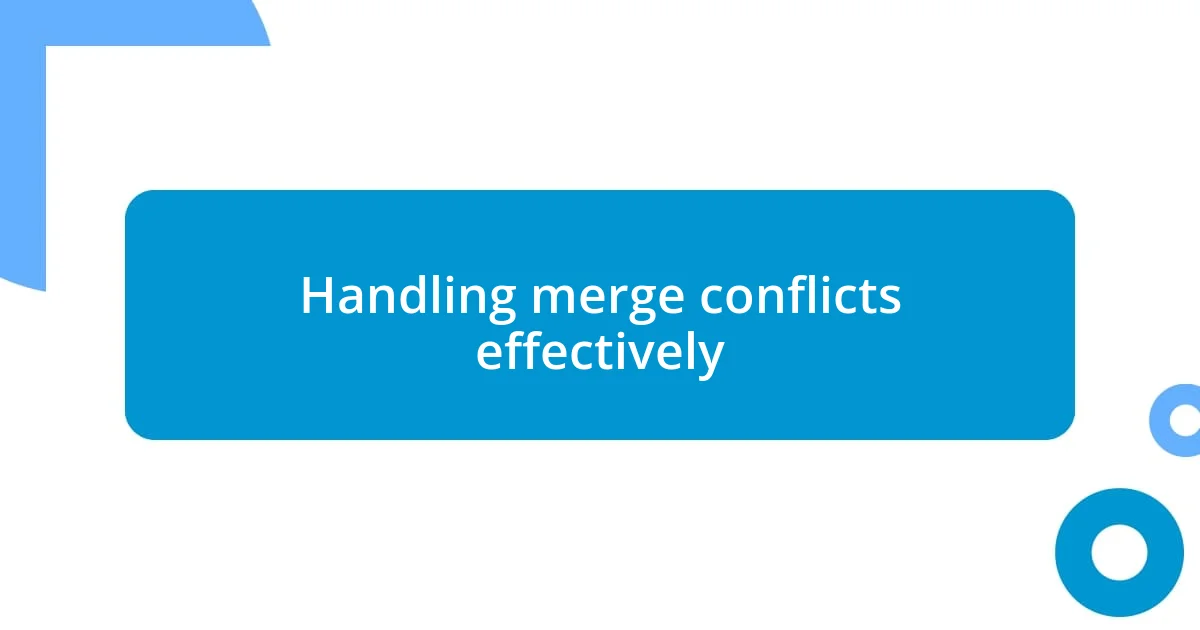
Handling merge conflicts effectively
When dealing with merge conflicts, I’ve learned that staying calm is half the battle. There was one time when I merged changes from a colleague and found myself staring at red lines and conflict markers, which felt overwhelming. Instead of panicking, I took a deep breath and systematically addressed each conflict. I’ve found that breaking down the issues step by step helps to reduce frustration and gives a clearer path to resolution. Have you felt that moment of panic too? It’s all about taking it one piece at a time.
I can’t stress enough how valuable it is to understand each party’s intentions behind their changes. In one project, I faced a conflict between my updates on a shared feature and a teammate’s adjustments. By discussing our thought processes before diving in, we aligned on our goals, which not only resolved the conflict but also strengthened our collaboration. I’ve come to see these conversations as vital checkpoints; they transform a potentially frustrating experience into an opportunity for team learning and improved design.
Another crucial aspect is documenting the resolution process. After overcoming a particularly tricky merge conflict where I had to integrate multiple feature branches, I made it a practice to leave notes in our pull requests explaining what decisions were made and why. This habit not only clarified things for others but also served as a helpful reference when revisiting those changes later. Have you ever noticed how past conflicts can guide future decisions? I genuinely believe that these notes can elevate our teamwork and knowledge sharing, making everyone feel more empowered.
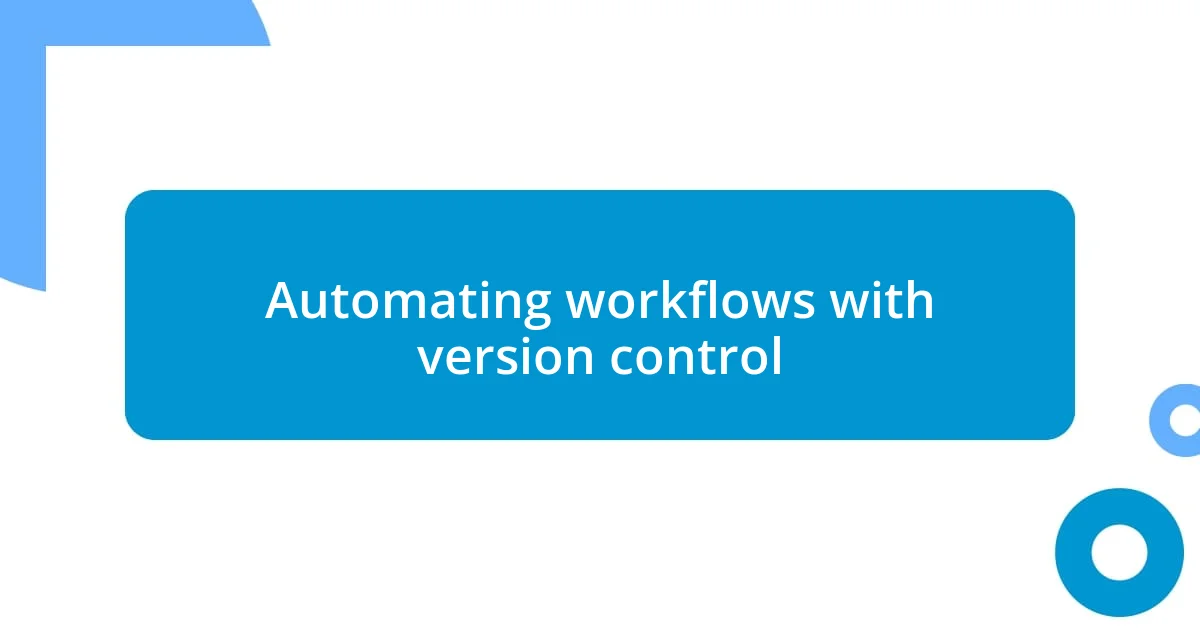
Automating workflows with version control
Automating workflows with version control has been a game changer in my frontend development routine. I remember when I first integrated tools like GitHub Actions into my projects. Setting up automated testing made my life infinitely easier; I could push code and not only receive immediate feedback but also move on to the next task with confidence. Have you ever felt that rush of knowing your code is being checked automatically? It’s such a relief!
One of the most impactful practices I adopted was implementing continuous integration (CI) and continuous deployment (CD) pipelines. For instance, after adding a new feature to a project, I configured the pipeline to run unit tests every time I pushed my code. It meant that I spent less time worrying about breaking changes and more time focusing on creativity. Honestly, the first time I saw those tests pass seamlessly, it felt like unlocking a new level in a video game—everything just flowed beautifully.
Additionally, I’ve found that using tools like Prettier and ESLint alongside version control helps maintain code quality effortlessly. The first time I automated these formatting and linting processes, it was like a weight lifted off my shoulders. I no longer fret about minor syntax errors or inconsistent styles when collaborating with others. Have you experienced that joy of seeing your code adhere to a clean standard, almost like a well-organized room? Automating these workflows not only enhances productivity but also fosters a culture of professionalism among team members, encouraging a shared commitment to excellence.














